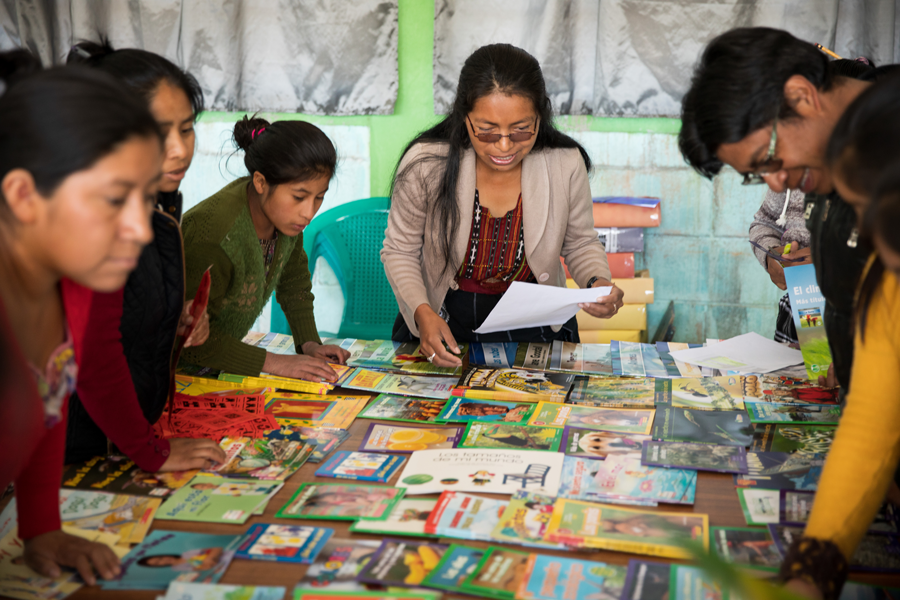Building a Culture of Reading
Inspiring Lifetime Readers and Learners
We want Child Aid’s transformed classrooms to prosper long after our literacy program concludes, so we support institutional changes in schools that ensure kids are reading and learning for years to come.
Reading Promotion Activities in Schools:
Organize and label school book collections
Set up school libraries and classroom reading corners
Make books available to students after school and at recess
Lend books to students to take home for independent reading
Establish star reader programs to celebrate student achievement
Host after school student book clubs to promote and encourage reading
In 2018, 96 percent of Child Aid schools implemented three or more of these reading programs.
Literacy Programs in Schools
Support for Reading Promotion
Child Aid literacy trainers work with teachers and principals to make books more accessible to students and ensure they are reading every day, both in and out of the classroom. Trainers and teachers work together to set up school libraries, create classroom reading corners and establish book lending. Each school is encouraged to create a yearly reading plan so new ideas are reviewed and implemented easily.

Adventures in Reading
Child Aid’s school-break reading program gives students access to books and opportunities to read while school is not in session. Each year, teachers receive training and support to host the four-week sessions at their schools. Students participate in read-alouds, games, art projects and literacy activities that inspire them to keep reading and learning.

Support for Graduated Schools
After schools complete the Reading for Life program, a dedicated literacy trainer provides ongoing support to schools. Through a combination of school visits, workshops and vibrant online communities, our literacy trainer helps teachers implement new activities, share ideas and celebrate success stories. Our goal is to sustain and nurture the culture of coaching and professional development established during the program so schools can continue improving the quality of education for their students.
“As a school we are making reading a priority. Our focus is to create a love for reading, and our hope is that, in the future, we won’t have to tell our students to read, but rather the love for reading comes from them.”
Cecilia Pos Ajquichí
Grade Six Teacher, La Fe

Our Program Works
Child Aid students improved 65 percent more than their peers in reading comprehension.